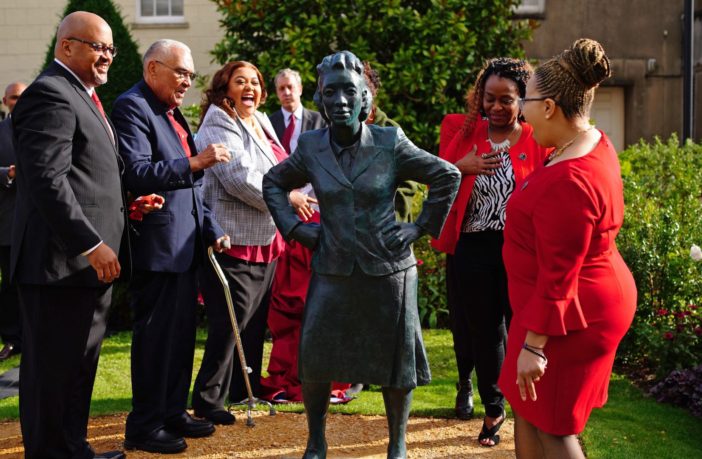Henrietta Lacks will have a bronze statue of her likeness in place of a Confederate general Robert E Lee monument that was removed in her birthplace of Roanoke, Virginia, reports the New York Times. The statue will stand in downtown Roanoke at Henrietta Lacks Plaza, previously named Lee Plaza after Lee. In early 1951, Lacks had cells taken from her body without her consent which have since been utilized for universal medical research. Even today, her cells contribute greatly to understanding how vaccines, drugs and viruses—like polio and COVID-19— work.
Roanoke Hidden Histories, an organization dedicated to acknowledging Black history in public spaces throughout the community, raised more than $183,000 for the project.
On Monday, artist Bryce Cobbs unveiled a life-sized preliminary drawing of Lacks in a special ceremony. “The fact that I’m involved in this project means the world,” Cobbs said at a press conference. “I’m humbled to be a part of history in this way and just to be trusted with the task of making sure that I just captured Mrs. Henrietta Lacks the best way I could.”
The drawing will be used as a reference for sculptor Larry Bechtel in his design, which is expected to be unveiled in October 2023.
Lacks’ grandson, Ron Lacks, expressed his excitement about the statue.
“This is an honor and a privilege to be here in Roanoke with my father, Lawrence Lacks, Henrietta’s oldest and only living child,” he said at the ceremony on Monday. “This historical moment, occasion, has been a long time coming.”
Attorney Ben Crump said the statue will serve “as a reminder that Henrietta Lacks lives on through her legacy and great, though unwitting, contribution to science and medicine.”
“I just think it’s so fitting in the state of Virginia … where in the past we commemorated a lot of men with statues that divided us. Now here in Roanoke, Virginia, we will have a statue of a Black woman who brings us all together,” he said.
“When you consider issues of genetic justice, reproductive rights, and stem cell research, there are a lot of historical figures who we like to suggest that their contributions changed the world,” he continued. “Well, in the case of Henrietta Lacks, we have objective evidence. If I was in the court of law, I would say we have empirical evidence that Henrietta Lacks’ immortal cells literally changed the world.”
Lacks unknowingly became the source of several medical breakthroughs while receiving treatment for cervical cancer at Johns Hopkins Hospital. As her cells are the source of the HeLa cell line, they are the first immortalized human cell line and one of the most important cell lines in the history of medical research.
As was the practice of the time, no consent was required to harvest the cells obtained from Lacks’s treatment. Her death in October 1951 helped establish The Common Rule, an ethical standard for informed patient consent in the medical community.
Lack’s family wasn’t aware of the medical practice until 1975. She nor her family were compensated for her participation in the research.
Her story became known to the masses after Rebecca Skloot’s best-selling book, The Immortal Life of Henrietta Lacks, was released in 2010.
Oprah Winfrey starred in an HBO film about Lacks’ life in 2016.



